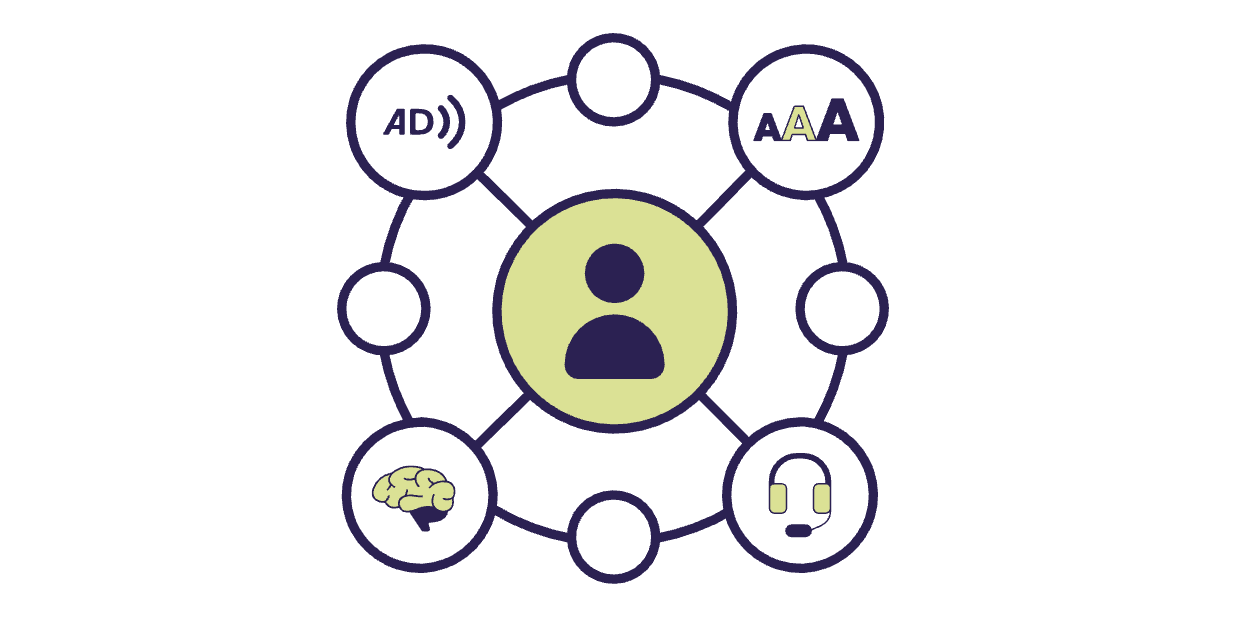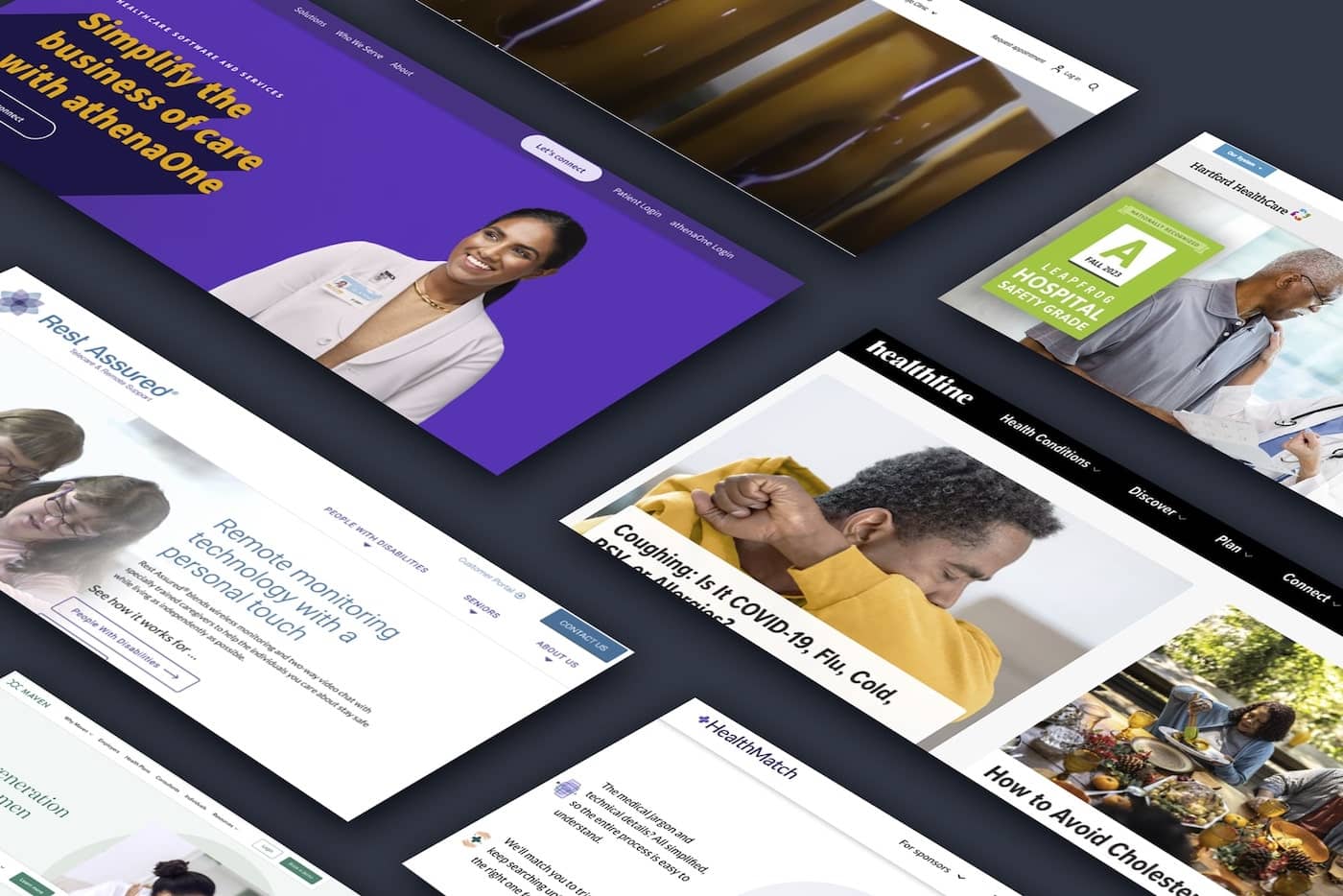

The State of SEO in 2024
Companies that rely on Google traffic to drive business growth must produce, measure, and adapt their content, or risk getting left behind.
What worked last year, last month, or even yesterday may not work today—that’s the nature of SEO, a field where change is the only constant.
To stay ahead, marketers must keep up with the latest trends and insights around search engines and their algorithms. SEO evolves quickly, with regularly issued algorithm updates altering how content is found and ranked in search results. Google’s shift of its own search experience towards SGE and AI Overviews and factoring in user behavior metrics will require frequent updates to your search optimization strategy.
Understanding and implementing current SEO trends enhances visibility and ensures content remains relevant and accessible to the target audience. Remember, content is ultimately written for people, so focusing solely on SEO won't guarantee success; AI chatbots, for instance, favor natural language.
Today, these search marketing trends are more critical than ever, as they affect your website's performance and overall digital presence–especially for B2B businesses who must compete for awareness and traffic online to consistently generate new sales leads and sustainable growth.
Emerging Trends in SEO
Several trends are expected to reshape the SEO landscape in 2024, bringing both opportunities and challenges for businesses aiming to improve their online visibility.
1
 Google's Search Generative Experience (SGE)
Google's Search Generative Experience (SGE)
Google's Search Generative Experience (SGE), or "AI Overviews," represents a significant shift in how search results are generated and displayed. Leveraging advanced artificial intelligence, SGE provides users with AI-generated snapshots of key information directly at the top of search engine results pages (SERPs).
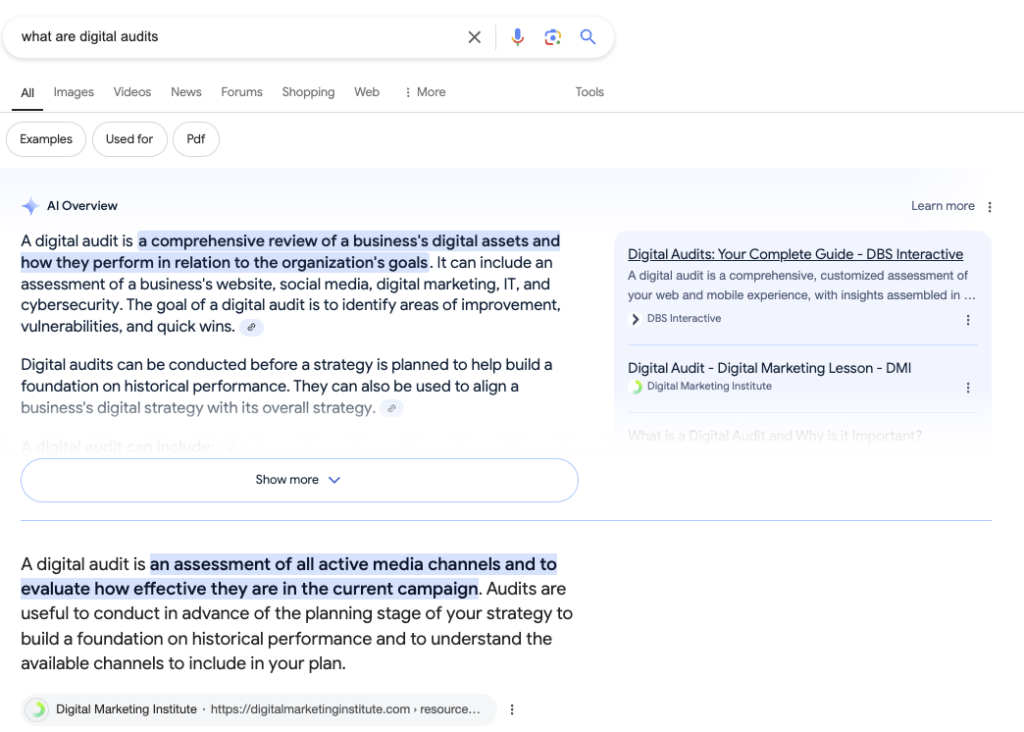
The Impact: Google's Search Generative Experience (SGE) pushes traditional organic listings down on search engine results pages (SERPs), causing significant drops in organic traffic. Marketers must adapt by producing content that aligns with user intent, using natural language and long-tail keywords, and leveraging structured data and featured snippets.
2
 The Increasing role of AI in SEO
The Increasing role of AI in SEO
Artificial intelligence offers marketers sharper tools for redefining SEO content optimization.
AI-driven tools create more relevant and targeted content by analyzing search intent and context. This personalizes user experiences, tailoring search results to individual preferences.

Opportunities
- SEO: Improves precision and efficiency in content creation.
- Personalization: Adapt content and search results based on user behaviors and preferences.
- Predictive analytics: Anticipate business trends and refine strategies.
- Data analysis: Identifies valuable keywords, optimizes content clusters, and boosts site performance.
- Competitor analysis: Provides deep insights into competitors' strategies for better decision-making.
- Productivity: Enhances search marketers' ability to create compelling content and maintain data integrity.
The Impact: The shift means more effective targeting of potential clients and better alignment with user needs.
3
 UX Optimization
UX Optimization

Faster page speeds and high web performance have emerged as differentiators for SEO success. Studies have found that most websites fall short minimum thresholds for optimal user experience (UX).
Quantified by Google's Core Web Vitals (CWV), the search giant considers this UX measurement a significant search ranking criterion.
Simply, CWV measures how quickly users can get what they need from your website.
Simply, CWV measures how quickly users can get what they need from your website.
Core Web Vitals, which include metrics like Largest Contentful Paint (LCP), First Input Delay (FID), and Cumulative Layout Shift (CLS), evaluate crucial aspects of user experience such as loading speed, interactivity, and visual stability.
Websites excelling these areas are more likely to achieve higher rankings in search results.
Google rewards websites that offer optimum user experience.
In 2024, optimizing for UX isn't just a best practice; it's a move that aligns with the latest digital marketing strategies, ensuring that your website meets user expectations and stands out in a crowded digital space.
The Impact
B2B businesses that prioritize Core Web Vitals will likely see significant improvement in search rankings. Studies show that click-through rates nearly double for each higher organic search position. Enhanced page speeds and web performance provide a better user experience and brand perception, which increases engagement and satisfaction. The result is a more substantial online presence, improved lead generation, and higher client retention rates.
4
 Visual Search Optimization
Visual Search Optimization
As noted, Google's SGE indexes more content types, making visual search a new way for users to interact with website information.
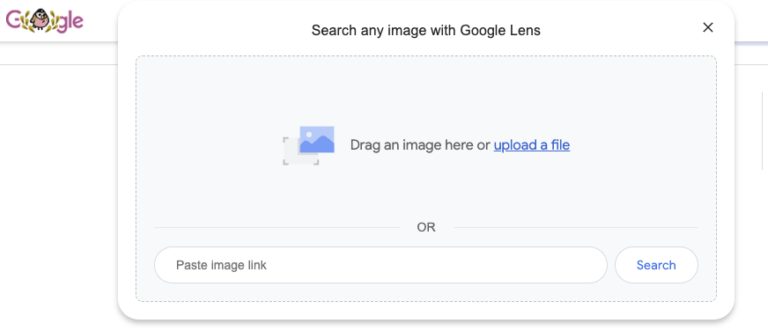
More people are turning to visual search tools, such as Google Lens and Pinterest Lens, to find products and information by uploading images. The shift presents an opportunity for businesses to capture traffic by optimizing their content for visual search.
Opportunity
- Use high-quality images, ensuring they are clear and visually appealing.
- Provide clear titles and descriptions that accurately reflect the content of each image.
- Implement schema markup to help search engines understand the context of your images.
- Use alt text and captions for accessibility and improving discoverability.
The Impact
Visual search offers B2B businesses an ROI by increasing online visibility and capturing new traffic. This tactic capitalizes on growing these trends, ultimately driving users through the buyer journey.
5
 Voice Search Optimization
Voice Search Optimization
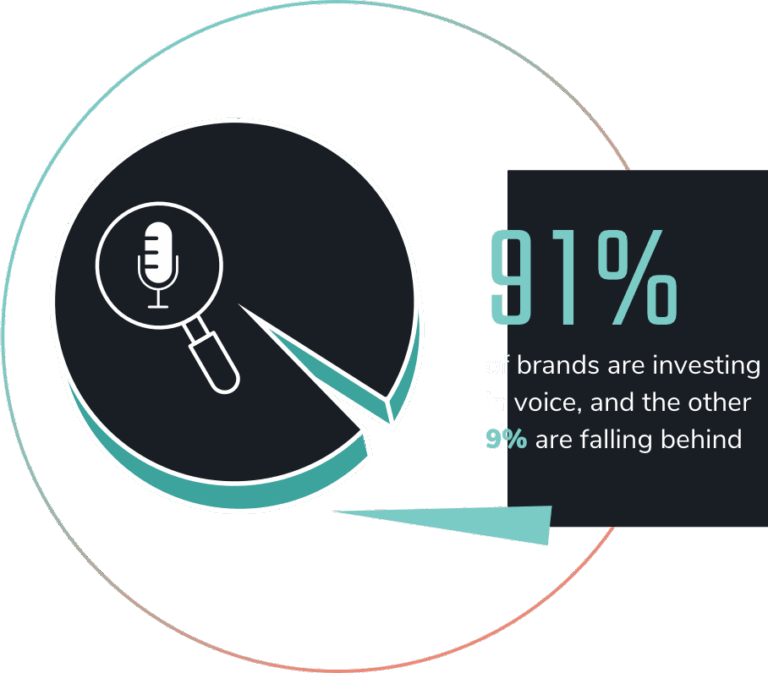
While voice search isn’t new, numbers tell the story of voice search, making it one of the most important trends in SEO.
About 41% of adults use voice search, and a stunning 90% say it’s easier.
Those numbers can’t be ignored as more people become more comfortable “talking” to their phones.
The shift points to how content must be optimized for voice search assistants.
Optimizing for voice search focuses on natural language and conversational phrases that mirror how people speak. This includes incorporating long-tail keywords, which align with the more detailed queries often used in voice searches.
Structured data markup is a must. It helps search engines better understand and interpret the content, improving the chance of appearing in voice search results.
The Impact
B2B businesses can leverage voice search to increase visibility, capture more leads, and improve engagement. This strategy ensures businesses remain relevant and accessible in a rapidly evolving digital landscape.
6
 Rise of Zero-Click Searches
Rise of Zero-Click Searches

The rise of zero-click searches is one of the most significant trends reshaping SEO in 2024. A zero-click search occurs when users find their answers directly on the search engine results page (SERP) without clicking any links.
As Google continues enhancing SERP features—like featured snippets, knowledge panels, and direct answer boxes—more searches are ending with zero clicks.
The Downside
Reduced Website Traffic: When users find the information they need directly on the search results page, they are less likely to click through to your website.
Lower Click-Through Rates (CTR): (See point 1) With more answers provided directly on the search engine results page (SERP), the CTR for organic listings drops.
Increased Competition for SERP Features: As zero-click searches become more common, competition for featured snippets, Knowledge Graphs, and other rich results intensifies.
Ineffective Tactics: Traditional SEO tactics may become less effective as zero-click searches rise.
The Impact
B2B businesses must enhance visibility by earning featured snippets and other SERP features. Authoritative content that answers typical queries directly positions businesses as industry leaders and increases prominence on search results pages. Optimizing content for these features ensures that results stand out even if users don't click through. Additionally, diversifying digital channels beyond traditional SEO maintains visibility and drives traffic from other sources.
Established SEO Best Practices
Despite the rapid SEO changes, best practices remain to maintain a solid online presence and drive consistent traffic.
 1. E-E-A-T: Experience, Expertise, Authoritativeness, Trustworthiness
1. E-E-A-T: Experience, Expertise, Authoritativeness, Trustworthiness
 This timeless acronym will never go out of vogue. E-E-A-T, which stands for Experience, Expertise, Authoritativeness, and Trustworthiness, is a framework that Google uses to evaluate the quality of content, especially on topics that can significantly impact users, such as health or finance.
This timeless acronym will never go out of vogue. E-E-A-T, which stands for Experience, Expertise, Authoritativeness, and Trustworthiness, is a framework that Google uses to evaluate the quality of content, especially on topics that can significantly impact users, such as health or finance.
Though not a ranking factor, E-E-A-T is essential in Google's search algorithm, influencing how content is evaluated for its reliability and user value.
The E-E-A-T strategy involves optimizing the user experience through secure and intuitive site design, creating high-quality content showcasing your expertise, and building a positive online reputation. Ensure your content is accurate and up-to-date. It should be authored by subject matter experts (SMEs).
Additionally, implementing secure transactions and earning positive reviews solidify your credibility and foster trust. Aligning your content with E-E-A-T principles improves your chances of ranking higher in search results and provides a better experience for your users.
 2. High-Quality Content Creation
2. High-Quality Content Creation
 High-quality content is vital for SEO success. Search engines emphasize delivering valuable and relevant information to users. The downside of AI-generated content is that it lacks depth, originality, and a personal touch to engage readers.
High-quality content is vital for SEO success. Search engines emphasize delivering valuable and relevant information to users. The downside of AI-generated content is that it lacks depth, originality, and a personal touch to engage readers.
Content that feels impersonal or generic undermines user trust and fails to achieve desired results.
Effective content uses persuasive and engaging language that resonates with your audience. Visual, interactive elements and clear calls-to-action (CTAs) enhance the user experience.
Tailoring your content to the different stages of the customer journey ensures that you meet specific audience needs, guiding them from initial awareness to conversion.
Focus on quality over quantity and prioritize human connection.
 3. Mobile-First Indexing and Optimization
3. Mobile-First Indexing and Optimization
Mobile-first indexing has become a cornerstone of Google's approach to ranking websites. As more users access the web through mobile devices, Google primarily uses a website's mobile version for indexing and ranking, making mobile optimization crucial for SEO success.
Best Practices for Speed and Functionality

Implement Responsive Design: Ensure your website adapts seamlessly to different screen sizes for a consistent user experience across devices.
Optimize Loading Speeds: Improve site speed to meet mobile users' expectations for quick access to content and reduce bounce rates.
Enhance Voice Search Optimization: Optimize for voice search to boost visibility and engagement on mobile devices.
Adopt Progressive Web App (PWA) Standards:Develop a PWA to provide offline functionality, fast performance, and an app-like user experience.
 4. Regular Content Updates
4. Regular Content Updates

Relevent and fresh content is essential for maintaining strong SEO performance and engaging your audience. Search engines favor websites that regularly update their content.
Implement regular content audits to identify outdated information and areas for improvement. Monitor industry trends to adapt content to reflect the latest developments and insights.
Engaging with your target audience through comments, feedback, and social media interactions can provide valuable insights into relevant topics. Analyze keywords and conduct ongoing keyword research to identify opportunities.
 5.Internal and External Linking
5.Internal and External Linking
Effective internal and external linking still enhances user experience and search visibility. Internal links, which connect different pages within your website, help users navigate your content more easily and guide them toward relevant information.
 These links also assist search engine crawlers in understanding the structure of your site, ensuring that all pages are correctly indexed.
These links also assist search engine crawlers in understanding the structure of your site, ensuring that all pages are correctly indexed.
Linking to authoritative sources is equally important. It lends credibility to your content by referencing well-respected information, allowing users to explore more in-depth knowledge or expertise that your site may not provide directly.
Earning backlinks from authoritative sites significantly boosts your SEO, creating a two-way "trust network." The interconnectedness increases your site's credibility in the eyes of search engines, improving your overall ranking and visibility.
Using internal and external links strategically enhances your site's authority, user engagement, and search engine performance.
Adapting to the Future of SEO in 2024
As the SEO landscape continues to evolve, staying ahead of emerging trends like Google's SGE, AI integration, and voice search optimization. Adhering to established best practices maintains a competitive edge. The search environment in 2024 is more dynamic than ever, requiring businesses to adapt quickly to new technologies and user behaviors.
Focusing on high-quality content, mobile-first design, and strategic linking enhances online visibility and drives meaningful traffic.
For SEO strategies that keep pace with these changes and deliver results, contact us today, and let's optimize your digital presence together.
Keep An Eye on These Topics
Video SEO: Video content is becoming increasingly important. Optimizing your videos for search, including using proper tags, descriptions, and transcripts, can boost your visibility.
Sustainability and Ethical SEO: As consumers become more conscious of ethical practices, aligning SEO strategy with sustainable and ethical practices can enhance your brand's reputation and trustworthiness.
Social Signals: While not a direct ranking factor, social signals like shares and engagement can indirectly impact your SEO by driving traffic and increasing visibility.
Content Clusters: Organizing content into clusters around central topics can improve your site's authority and make it easier for search engines to understand your content hierarchy.
